Greetings!
Late again, oops! Anyway, as promised we’re back in the Land of the Eagle… or maybe not. You see, this week’s destination is a bit of a tricky one. The UN says it’s Serbia, the EU says it’s an independent country. The Serbs call it Kosovo but the Albanians Kosova and very recently there was a war fought over the issue. It has its own flad, a yellow map with stars on a blue background but the locals prefer to use the Albanian eagle and many want to be in Albania. Others though, firmly don’t, and still use the Serbian tricolore. As always in the Balkans, it’s complicated yet great fun to discover…
Keep travelling!
Uncle Travelling Matt
Links to all parts of the travelogue:
Part Five
On the evening of 3rd September, 2009, I was to be found sat at a table in Pristina’s town park, a beer in one hand and a cigarette in the other, contemplating the events of the day that was just drawing to a close. From the Hotel Rozafa in Shkodra that morning, I had travelled around 180km, a substantial distance, true, but in fact it felt like much more. The going had been slow, the means of transportation varied, but more than that, ever since entering the Republic of Kosova, I’d felt like I was in another world entirely.
There is good reason for that, for whilst the Albanians are the principal inhabitants of both Albania and Kosova, both man and God have conspired to separate the two in almost every other way. Man has ensured that Kosova was not to be included in the independent Republic of Albania established in 1912 and instead she became part of Serbia and then Yugoslavia. Following the end of World War II, not only were the two entities in different countries, but due to Hoxha’s paranoia and Tito’s bombast there was virtually no trade or contact between the two, Yugoslavia distancing itself from its communist neighbours whilst Albania cut itself off from the entire world. Divided by ideology, politics, history and economics, the two grew apart, separated by a bunker-lined border, and so it remained until 1991 when Albania finally emerged from her isolation. Kosova, although the poorest province in Yugoslavia was still much richer than her neighbour, who was now the most impoverished country in Europe even if she were no longer the most isolated. From then on however, fortunes reversed; the Yugoslavian government morphed into a nationalist Serb dictatorship and the Albanian language and culture of Kosova was suppressed. Then came the army and the massacres and after that the international response, with NATO troops invading in 1999 and, after the inevitable victory, placing the entity’s Albanian majority in control.
So that was man’s input, but God was not idle either. Whilst Albania is virtually all mountains, her land arid and difficult to farm, Kosova is a plain of fertile farmland, her borders defined by the peaks of her neighbours. As soon as I crossed that border at Tropoje, the landscape flattened out and the houses looked different. Yes indeed, this was a very different country with a very different story to tell.
But that feeling of change was partially my fault as well. Whilst I had studied Albania’s history, politics, culture and geography in some depth of the years, I knew far less of Kosova and could name none of her cities off the top of my head beyond the capital.[1] The names of the towns and villages were all alien to me and my detailed Bradt guide stopped at the border post. All I now had to reply on were the brief entries in my Lonely Planet Western Balkans, written by an author who had never even visited the place.
The first town that we reached was Djakova. Durham had described it as being “built of mud” and was generally none too complimentary about the place. That said, it was the main provincial centre and market for the highlanders, a role that it has only just recovered. Ironically, much of the isolation of the area around Bajram Curi was because it had been artificially separated from the nearest centres of civilisation: Djakova, Peja and Prizren.
When I visited there was little to see, (possibly because all the old buildings, being built of mud, had disintegrated?), but there was a large new Catholic church on the edge of town which linked it with the Catholics of Northern Albania. What was most striking for me however was the first proper bus station that I’d encountered on my trip. And since there was one, it would have been rude not to use it, so I walked on in and hopped on the first bus to Pristina.
The Kosovan countryside is immensely different to that of its neighbour. Whilst the flat-roofed houses of Albania reminded one of the Mediterranean nations, Kosova’s brick dwellings with pitched roofs are altogether more Mitteleuropean. It wasn’t so scruffy and scratty either, although the war had left its marks: every so often we passed a cemetery with smart, black, polished marble graves and the Albanian eagle flying high above. All the names on the headstones had the year 1999 on them and like Albania there were the obligatory partisan statues everywhere, but these depicted much more recent heroes, and whilst every sign was bilingual, many of the Cyrillic names of villages had been sprayed out by local zealots. Most noticeable for me though: not a single domed bunker to be seen.
The drive to Pristina took a couple of hours for Kosovan roads are noticeably better than those in Albania. We forget now, with all the wars and troubles, but at the time of Tito’s death, Yugoslavia was a rich country on the brink of EU membership. Kosova was its poorest region but even there the basic infrastructure was good. That’s the difference between Kosova; the former is a rich country fast becoming poor whilst the latter is a poor country fast becoming rich. As things stand at the moment, they’re probably at economic parity, but even so, the past shines through.
Pristina’s bus station was out of town and I had to take a taxi to my chosen hotel, the Velania Guest House, the backpacker favourite, run by an eccentric ex-professor. I booked myself in, was handed a Pristina In Your Pocket guide by the prof, (who was most insistent that I return it when checking out), and then, bags discarded, was let loose on the Kosovan capital.
Pristina is not a nice city. It is probably the dullest capital that I’ve ever visited and I’ve been to a few. There again, it was never intended to be a capital, nor expected to become one. Like they say, some are born great, some achieve greatness whilst some have greatness thrust upon them. Pristina is definitely in the latter category and she seems uncertain of what to make of it all. However, even making such excuses, one has to say that even as a provincial city, Pristina is pretty naff. Surrounded by apartment block-clad hills, her centre is strung out along two parallel streets that converge at the north end, the Bulevardi Nëna Terezë and Agim Ramadani, both of which are endowed with a soulless collection of 1960s concrete blocks, punctuated only by a few equally crap glass cuboids of the NATO Era. The only buildings older than the Second World War seemed to be either damaged or under renovation, but then that’s what happens when aggressive town planning and a war happen to a city.
I went first to the old part of the city near to where the two main streets converge. There were several Ottoman mosques, a hamam and some 19th century houses to be seen, but all were closed for repairs. Whilst nothing special on their own, they did truly bring home just how much Hoxha and his cronies had wantonly destroyed in Albania. Pristina was only a minor city in Ottoman times, much ravaged by war, planning and nature since, yet she still has more Ottoman remains than Dürres, Tirana and Shkodra combined.
Ottoman Prishtina
It was not the past though, that was Pristina’s main attraction, but instead the present. An ugly, soulless place she may have been, but it was fascinating to see a new nation being born out of the ashes of conflict. Everywhere there were posters boasting ‘10 VJET STABILITET’[2] with a picture of two K-FOR helicopters, and ministerial buildings that had obviously once been hotels or council offices a few years back. All around the flag of the new independent country fluttered proudly, a yellow outline of her national territory with six stars above, all on a blue background. A country had been born, in the teeth of the fiercest of opposition, still unrecognised by much of the world, and that was a sight truly worth witnessing.
10 years of stability!
Not that all was well there mind, for even new countries have memories as well as growing pains. The shell of the unfinished Orthodox cathedral reminded one of a departed people as well as an oppressor, whilst in front of the UNMIK[3] building on Bulevardi Nëna Terezë were pinned the photographs of the almost two thousand Kosovans still missing and unaccounted for from the 1999 war, (although each and every one was an Albanian – did not even a single Serb get murdered I wonder?). On virtually every wall in the city I saw two notices pinned up or scrawled. The first concerned those missing: ‘Ku janë?’[4] it asked, whilst the second, ‘EUMIK EULEX’ related to more recent concerns; allegations that EUMIK[5] and EULEX[6] were working in tandem with the auld enemy, Serbia.
I decided to drink a beer on Bulevardi Nëna Terezë in order to take it all in and watch the crowds pass by on their evening xhiro. It is pleasant, sitting on a Balkan street, the evening pleasantly warm, watching pretty girls walk past, and my one beer became two and then, when I spied a cigarette seller, then the relaxation was complete. I don’t smoke at all generally, but sometimes one is in the mood and this was one of those times. And so it was that I sat and drank and smoked and absorbed Pristina, before rising and making my way back up the hill towards the guesthouse. En route though, in the city park, I spied a small establishment serving beer and playing chalga and I knew that those two beers would have to be added to.
And so there I stopped, under the spreading pines, watching smoke curl up into the Kosovan sky, thankful that I’d made it so far and wondering what the morrow would bring. A good end to the day you ask? Indeed so, sir, indeed so…
Now both my guidebook and the professor’s ‘Pristina In Your Pocket’ informed me that whilst Pristina is no great shakes in itself, from her virtually everywhere in Kosova is accessible on a short day trip and that in that small country there are two cities that are well worth visiting, namely Peja and Prizren, and so it was that I decided to take in the former and depending on how much I liked it or not, possibly the second also.
The trip to Peja followed the same road that I’d travelled along the day previously for much of the journey and it was only when we got near the city itself that the scenery got interesting. What had swung it for me in choosing Peja over Prizren was a picture in ‘Pristina In Your Pocket’ showing some buildings by a river with a spectacular mountain backdrop. It reminded me a little of Blagoevgrad in Bulgaria which is a pleasant enough place and so I’d thought Peja worth a look and indeed, even from the bus it was clear that the mountains beyond the town were indeed awesome; the Albanian Prokletije from a different angle that what I’d seen the day before.
Unfortunately however, the town in front of those matters was not quite so impressive. Peja is a rundown place, obviously suffering economically and she does not offer a great deal to see. The bazaar area is marginally interesting, (although few old buildings remain, most are concrete copies), and her only Ottoman mosque was full of worshippers so I couldn’t look inside. I headed down to the river that had looked so appealing in the guidebook, but there were no cafés in which to sit and watch the water warble by as I’d anticipated and instead half the buildings were still in ruins from the 1999 conflict. It was hard to believe that ten years had passed by since the guns had been silenced, for it looked in Peja as if the war had been yesterday. Indeed the only plus point was the ethnographic museum which had a very friendly curator who explained to me the finer details of the reconstructed 19th century interiors and the display of traditional clothing, but even that experience was spoilt slightly when she told me that the house had once stood elsewhere and had been moved to its present location in the Tito Era. It was Enver Hoxha’s house in Gjirokastra all over again…
Peja: wartorn
Of course, Peja’s main attraction is the Patrijaršija Monastery, seat of the Serbian Orthodox Patriarch, (and one of the main reasons why the Serbs view Kosova as an integral part of Serbia – it would be like having Canterbury Cathedral in France), but that was several kilometres out of town and would have necessitated getting a taxi and I, disappointed by Peja, was in a mood, so instead I hopped on a bus and headed south for Prizren.
The journey was again, quite nondescript, although just past Djakova we did cross a new bridge over the Drin and beside us was a much older bridge with around ten graceful arches. It truly was spectacular and research on the internet afterwards revealed that it was in fact called Bistrazin Bridge and dated from the 17th century.
Bistrazin Bridge
My guidebook informed me that Prizren’s bus station was – like all bus stations in Kosova – out of town, and also that the town had a castle from which the views were “stupendous”.[7] Considering that I would have to be taking a taxi anyhow, that I was a little tired from walking around Peja and that time was short, I decided that the castle should be my first port-of-call and so I hailed a cab and off we went.
Compared to the fortresses of Rozafa and Gjirokastra, Prizren’s castle was a let-down; a featureless pile of rubble that only an archaeologist could decipher. It was however, not the castle itself that I had come to see, but instead the views and they were, as promised, stupendous.
If Pristina is Kosova’s modern-day capital, then Prizren is historical heart. Once the capital of a mediaeval Serbian kingdom her image is so ingrained in the Serb psyche that during the First Balkan War soldiers volunteered in their droves so that their nation may retake her ancient and spiritual capital from the Turk, but it is also the place where the modern Albanian state was born and her architecture and atmosphere are in fact neither Albanian or Serb, but instead profoundly Ottoman. What’s more, up there on those crumbling ramparts, she was all laid out before me like a meal just waiting to be enjoyed.
Through the centre runs the Drin, the river that is the heart blood of the Albanian lands; the river that I’d viewed from Rozafa, sailed up from Koman to Fierzë and which was now a silver ribbon running through the town, crisscrossed by stone arches and sandwiched in between a sea of red-tiled houses, minarets and church belfries, whilst beyond the city limits lay the fertile plain of Kosova and beyond that the forbidding mountains of the Prokletije. It was the quintessential Balkan scene and I drank it in.
Prizren from the castle
It was not these features however, that most caught my attention, but instead something a little nearer to where I stood. Perched on the hillside above the city and below the castle was a beautiful mediaeval Orthodox church. It was a burnt-out shell. All the houses around it were in a similar state. This was the neighbourhood where, only five years before, Prizren’s Serbs had dwelt and had been dwelling for centuries.
I will admit now that, generally-speaking, my sympathies regarding Kosova have always been pro-Albanian. Whatever the historical factors are, the democrat in me will always consider the rights of the 90% Albanians to be more important that the rights of a minority that is at most 7%. Take into account my absolute distaste for nationalism, particularly the racist and largely fictitious retelling of Balkan history peddled by Milosevic and his cronies, then my position becomes even more affirmed. In 1997 I became involved in a campaign to protest against the closure of Albanian-language education in the province and in 1999 I had plans to visit to see it all for myself. Nationalism, Milosevic and NATO all combined to put a stop to that trip, but significantly, the Kosova invasion was the only British military action in my lifetime that I’ve actively agreed with. What the Serbs were doing was, in my mind, just plain wrong, and the Albanians deserved their autonomy. That said however, it does not mean that I agreed with the events of 2004 when the tables were turned and the Albanians attacked their Serb neighbours. To be fair, like most other Europeans, I did not give those events the attention that they deserved. We all prefer to think that our big solution has sorted everything out and reminders that it hasn’t are not really welcome. That scarred hillside however, rammed the message home forcefully. Whether the majority or not, nothing gives one people the right to destroy the property of and drive out their neighbours. However, given the nature of nationalist feelings in the Balkans and the politicians who twist them for their own ends, then such events are tragically, not surprising.
Burnt out Orthodox church on the hillside above Prizren
I walked down what should have been an idyllic pathway from the castle to the town, but passing burnt-out houses and the shell of a church all surrounded by barbed wire and guarded by KFOR troops spoilt the atmosphere somewhat. It always upsets me when you see two communities of fellow human beings unable to live side-by-side; I had felt that same sickening feeling earlier in the year when I was travelling through the West Bank from Jerusalem to Hebron.
In the town itself things were far more normal, although it was clearly evident that such had not been the case until very recently. I wandered around happily this most Balkan of cities, admiring the Ottoman houses, mosques and hamam and the strange minaret with a Star of David on it that is thought to have once been part of a synagogue. However, all the mosques were being restored and on the side of the town hall was a huge list of ‘thank yous’ in a multitude of languages to all the countries that had helped Prizren rebuild.
Thanks guys, it means a lot…
The most haunting site however, was the city’s Orthodox cathedral, a grand 19th century edifice in the heart of the town, dedicated to St. George. Like its brother on the hillside above, it was surrounded by barbed wire, but this was no shell and the main gate was open. I walked through and a policeman came up to me. “Do you speak English?” I asked. He did not. “Do you speak Serbian?” I then asked. Like all Kosovans, he did. “I do not,” I replied, “but I do speak Bulgarian which is similar,” I replied in Bulgarian. “I am a tourist from England and I want to know if I may look in the church?” He shrugged and smiled.
“Go ahead!”
Prizren’s Orthodox cathedral was unlike any other Orthodox church that I’ve been in. Its interior, though traditional, was light and airy, not dark and icon-filled. In fact, it looked brand new, as if the white paint that covered the walls had only just dried. Then I realised: this building too had been a victim of the violence, and like the mosques nearby, had required much restoration. But such restorations can only ever be superficial, a church’s real beauty always lies in its worshippers, yet who would come to pray there, in a town whose Serbs had all been forced to leave? “Is there a priest?” I asked my armed guard.
“Yes, but he is sleeping now.”
“But who comes here, who prays in here besides the priest.”
“Само папа, няма народ.”[8]
All alone in Prizren’s Orthodox cathedral
I left that church feeling sad. That figure of the solitary priest conducting Mass alone every Sunday in the middle of his vast, freshly-painted cathedral was a tragic and striking one. Despite my sympathies for the Albanians, I was beginning to feel a little anger; what right that they to victimise my religion so?! Then ahead of me my eye caught sight of two beautiful girls walking down the road together. As a man’s thoughts so often do, mine wandered in an unholy direction and I wondered as to where they might be headed, and as I was going in the same direction, I thought it best to follow them awhile. So, down the street we went, then they both turned left and walked into a huge building. To my surprise, it was another church, but this one had no barbed wire or police guard around it. After I had entered, genuflected and knelt down to beg forgiveness for having such irreverent thoughts about two sisters in faith, it dawned on me that things were not as I had thought them to be but a minute before. Here was a church that had been left completely intact and required no security to safeguard it. And why? Because this church was Catholic, not Orthodox and the local Catholics were – like the two angels who had led me to that holy place – Albanian. This was no conflict between Christian and Muslim as it is so often portrayed; the church on the hillside and cathedral in the town had not been attacked because they were Christian. No, this was pure nationalism in all of its customary, reactionary evil, and it just so happened that the majority of Albanians were nominally Muslim and the majority of Serbs, nominally Christian.
I liked Prizren but darkness was now drawing in and I had seen most of what she had to offer, so I walked through the old city back to the bus station. On the way I came across a remarkable building that I initially took to be a ruin but learnt upon closer inspection that it was in fact complete and recently restored by the Turkish Army. It was an open-air mosque, or at least all the bits of a mosque necessary to conduct a huge outdoor service. There was a miniature minaret to call the faithful to prayer, a mihrab so they knew in which direction to face and a minbar for the imam to preach from. I have never seen one similar, either before or since.
Outdoor mosque, Prizren
By this time I was getting hungry so I decided to have some kebapche and coffee in a small snack bar by the bus station. The proprietor and his drinking buddies were intrigued by my Stoke City top and we fell into a conversation about football, with them telling me about an Albanian who now plays for Sunderland[9] and how Kosovans currently play in the Albanian national side since many countries do not yet recognise Kosova. This caused things to drift into the field of politics and I asked about something that had been puzzling me ever since I’d arrived in the country: What do the six stars on the new national flag symbolise? A fervent discussion ensued before the idea of Kosova’s six peoples prevailed over that of Kosova’s six cities. As for who those peoples are though, then even the proponent of the idea got stuck; there were Albanians and Serbs of course, and Gypsies, but after that…? The Vlachs maybe and “another kind of gypsy” but then they were lost.[10] “But it is no matter,” announced the proprietor enthusiastically, “for soon we shall have a new flag: a black eagle on a red background! We have the motorway to Tirana, we can pass freely; next we shall be one country!” All present were in favour of this proposed union with Albania, but not all were sure that the dream was realisable. “Oh no,” said the eldest drinker, “America and the EU will never allow it.”
The Kosovan Flag
I travelled back to Pristina feeling not only that I was beginning to get to know Kosova, but also that I was starting to like her. True, Pristina was naff and Peja had been a disappointment, but Prizren had exceeded all expectations and was in fact one of the finest and most fascinating cities that I’d visited in the entire Balkans. Strangely though, of all the places that I’ve visited, it was Hebron that it reminded me of the most. Five years ago both were ancient cities with two rival national groups laying claim to their legacy, invoking faith as well as history in those claims. In 2009 however, the formerly powerful minority had been forced out of Prizren, but in Hebron it still calls the shots and has created a fortified enclave for itself in the city’s historic heart. Both cities are tragic, monuments to the folly of man’s tendency to mould himself into groups with no scientific basis, but Prizren’s situation and atmosphere are by far the lighter. It is a terrible thing to say, but Prizren is in some ways a living advertisement as to how ethnic cleansing can, at times, be the lesser of two evils. The tyranny of the majority is a disgrace to humanity; the tyranny of the minority is beyond that.
That evening I met a fellow traveller named Manna from Finland. When I first heard her talking to a friend I couldn’t guess at what language it was that she was speaking and so I assumed her to be a local, (Albanian is one of the most alien-sounding tongues in Europe and although I hear it daily, I still find it hard to recognise), but no, she too was a tourist and a Balkanophile, although she was unfamiliar with Bulgaria, an omission in her experiences that I strongly recommended she rectify. Interestingly, there does seem to be a sort-of Balkans trail that independent travellers tend to follow, starting in Slovenia and then moving south through Croatia, Bosnia, Montenegro and Kosova, with perhaps the odd side-trip into Albania. All the travellers that I met on my trip had familiarised themselves with the Balkans in that way. Bulgaria I suppose, is not see as adventurous enough, Albania too adventurous for some, whilst Greece is just forgotten about as a part of the Balkans and consigned to package tourist land. That entirely reflects the communist era situation of course, but not the longer historical perspective, nor one suspects, future scenarios. Will the travellers of 2050 take in things in the same manner? I suspect not.
But it is good sometimes to learn from others’ experiences. Manna was friendly and her recommendations, (along with those of the boys I met in Gjirokastra), have convinced me that a trip to Bosnia-Herzegovina must be made soon, although by all accounts, despite both having suffered greatly in recent conflicts, Kosova and Bosnia could not be more different, for whilst Kosova’s wounds are fast healing over, Bosnia’s society is still one of mutual hate and suspicion; a stand-off enforced by the UN rather than a rapprochement.
The evening before I’d learnt about one aspect of Kosova’s healing from another traveller in the guesthouse; a Frenchman who was on a work secondment to the newly-formed Kosova National Railways. I’d wanted to use the train myself, but the times had been impractical so I’d left it, but it was fascinating to learn about the challenges of building a national rail network from the ashes of conflict. We ended up having a long chat about all things railways and I recommended he travel on Bulgaria’s spectacular narrow-gauge ‘Electrichka’ from Septemvri to Bansko’, but not the Albanian trains that run between Tirana and Dürres…
Waking up on my final day in Kosova, I did not know how things would go. Ideally there would be a bus mid-morning to Tirana, (although enquiries the previous evening suggested that I would not be so lucky), so that I could enjoy the spectacular scenery of the trip through the mountains and then arrive in the Albanian capital with time to spare. There was however, nothing till seven in the evening, so to pass the time I decided to see if the professor could sort me out with a taxi for the day at a reasonable price, enabling me to see a little more of Kosova.
The professor did manage to sort me out a taxi and for a mere €15 at that. When it arrived I discovered that the driver spoke no English but fluent Bulgarian having had a Bulgarian girlfriend and driven a taxi in Sofia for several years, so communication was not a problem, except that his Bulgarian was so good – and mine so rusty – that I had trouble keeping up at times. I told him that the first place I wanted to see was the famous monastery at Gračanica and he shook his head in that most confusing of Balkan fashions and we headed south out of the city to Kosova’s foremost Christian site.
My guidebooks raved about Gračanica and so did Edith Durham when she visited it almost a century before, employing such terms as ‘imposing’ and ‘beautiful’ in her descriptions. I however, was somewhat less impressed. True, it was a charming and atmospheric building, but what surprised me was its size, being smaller than most parish churches in England and certainly not on a scale befitting a major religious site. Furthermore, whilst it would have been magical and imposing if located deep in an ancient forest, approached by a winding path, stuck in the middle of a rather scratty village, it was far less so.
Gračanica Monastery
But then again, I hadn’t really come to Gračanica to be impressed. Instead, I wanted to see something of the Serbian side to Kosova, (or ‘Kosovo’ as they call it), and nowhere is better than Gračanica for that, for this is their Athos, the resting place of the Serbian soul. Built in the 14th century during Serbia’s ‘Golden Age’ by the great King Milutin, it was Gračanica which provided the monks who served Holy Communion to the troops of Prince Lazar before the ill-fated battle of Kosovo Polje in 1389.[11] It is due to sacred Christian sites such as Gračanica and the Orthodox Patriarchy near to Peja, and sacred historical sites such as Kosovo Polje, that the Serbs believe that Kosova will always be an integral part of their country, regardless of who happens to be living there. The attachment is emotional, not practical.
Having looked around the monastery I went into the shop to buy some souvenirs and fell into conversation with a very friendly English-speaking nun who asked me my faith and congratulated me on sharing a Christian name with one of the apostles. In turn I apologised to her for only having euros, (in the Serb enclaves in Kosova, the Serbian dinar is still the official currency), and she furnished me with some low denomination notes for my paper money collection. Amongst other items I also purchased a postcard of a famous Serbian painting entitled ‘Kosovan Maiden’ which depicts a comely young (Serb) girl giving water and succour to a wounded warrior after the Battle of Kosovo Polje. It was romantic nationalism at its best and summed up for me so much of what is wrong – and right – about the Balkans.
Outside the monastery I found my driver drinking coffee and smoking a cigarette with some of the locals. This surprised me a little, him being an Albanian and they Serbs, but he assured me that whilst some of Kosova’s Serbs were troublemakers, (particularly those in Mitrovica), the Serbs of Gračanica had never been any trouble at all and most were quite decent fellows indeed. This view was reinforced as we drove on and passed a Serb wedding in full fling with meat roasting and revellers dancing. “Ahh, these Serbian weddings are always very good,” he informed me. “The best food, music and women! I always enjoy Serb weddings!” But what of Albanian weddings? “I don’t know, I’ve never been to one, but everyone says that the Serb ones are better; they are not so stingy!”
In line with my investigations into the Serbian side to Kosova, my next destination was that site of sites itself, Kosovo Polje where the Ottoman Army broke the Serbian Kingdom in 1389 and ended its ‘Golden Age’. Serbs today look at that infamous defeat[12] as the turning point of their fortunes, their Calvary, and it was at the great monument erected on the battlefield that Milosevic announced his vision of a Greater Serbia in 1987. It was that vision that led to the disintegration of Yugoslavia, the deaths of thousands and the suffering of millions.
When I told my driver where I wanted to go, he shook his head in agreement and set off. However, once there, things did not go so swimmingly:
“Here is Fushë Kosova,” he announced as we drove down a dual-carriageway still under construction with scratty houses lining either side. “Now where do you want to go exactly in Fushë Kosova?”
“To the monument.”
“What monument?”
“There is a big monument to the Battle of Fushë Kosova.”
“Is there? I have never heard of such a thing but I can ask…”
And ask he did, but no one else knew about it either. Indeed, the only remotely Serbian building that we could find in Fushë Kosova was an Orthodox church in the middle of a field that was neither old, nor important nor, for that matter, unlocked. As for the magnificent Field of Kosova, that was nowhere to be found.[13]
“So what do we do?” asked my driver.
“We eat, and I’ll pay!” I replied. After all, what could I do? I had nowhere else to go, was getting rather peckish and he had been good company. So we stopped at a roadside canteen and I enjoyed some excellent chicken and tashqebap. That done though, what else? Alas, Kosova’s attractions – or at least the ones that were easily accessible – had all been exhausted. “Take me to the bus station,” I said.
It was one o’ clock when I was dropped off at Pristina’s bus station. The bus to Tirana was not until five. Four hours of sitting around did not appeal but what else could I do? Then I had an idea: Had I not loved Prizren? Was not Prizren on the way to Tirana? Was there not one more thing in Prizren that I wanted to see? Having answered ‘Yes!’ to all three and fed up of Pristina, I hopped onto the next Prizren-bound bus and headed out of the Kosovan capital for the very last time.
What I wanted to see in Prizren was the house where the Prizren League was founded on the 10th June, 1878. Well, not the original house; that had been destroyed by vengeful Serbs in 1999, but instead a reconstruction, the holiest shrine of the Albanian National Movement.
The Prizren League was essentially the first notable expression of Albanian nationalism in the modern era and was established to campaign for greater autonomy for the Albanians within the Ottoman Empire, to protect Albanian lands from being annexed by the Serbs and Greeks and to promote Albanian-language education. Initially however, it was an abject failure; its delegates were ignored at the Congress of Berlin and in the Balkan Wars the Serbs and the Greeks annexed most Albanian territories. In the longer term however, the League was a resounding success, for it managed to awaken the Albanian national consciousness, a process which culminated in the establishment of the modern Albanian state in 1912 and an independent Kosova in 2008.
Whilst this building was no doubt important, it was also not easy to find. I had wandered around looking for it the day before to no avail, and although I now knew that it was in the eastern part of the city, I still had to look awhile before I found it hidden behind a fine Ottoman mosque.
It was a strange place, a tiny house surrounded by a large courtyard, all immaculately kept. Inside there was an aura of sanctity and one could view the original documents pertaining to the League ceremoniously laid out alongside maps of an Albania far larger than would ever be realisable. All in all though, it left me with a nasty taste in my mouth. I am no nationalist and this vision of a Greater Albania, like Milosevic’s Greater Serbia, paid no respects to the realities on the ground, to the marvellous ethnic and cultural mix that is the Balkans. The shrine was too perfect also, like the Rizal Shrine in Manila, Ataturk’s tomb in Ankara and Ho Chi Minh’s house in Hanoi; it was false, sterile, inhumane…
The Prizren League Building
Having seen the Prizren League Building, I had nothing else to do. I drank coffee in the town square, put my photos onto a CD so as to free up some memory on my camera and then walked back to the bus station. I expected there to be a bus around six, (five o’ clock from Pristina, about six in Prizren), but that one bypassed Prizren and there wasn’t a departure for Tirana until eight. I ate my last meal in Kosova in a supermarket canteen and then waited, read some more of Durham, waited, read some more of Glenny, waited and then finally, the bus rolled in at eight and by nine we were at the border and I crossed back over into Albania…
Next part: Albanian Excursions: Part 6
[1] Although I had read Noel Malcolm’s Kosovo: A Short History which I thoroughly recommend, and also Edith Durham’s book does cover parts of the province.
[2] 10 years of stability
[3] United Nations Mission in Kosova
[4] Where are they?
[5] European Union Mission in Kosova
[6] European Union Rule of Law Mission in Kosovo
[7] Lonely Planet Western Balkans, p.308
[8] Only the priest, he has no people.
[9] Lorik Cana
[10] The six stars do indeed symbolize the six largest ethnic groups. According to Wikipedia, these are as follows: Albanians, Serbs, Bosniaks, Gorans, Turks, Roma. The Gorans are a Slavic group of Highlanders who are largely Muslim in faith and have been claimed by the Serbs, Bosniaks, Bulgarians and Macedonians although are generally seen as a distinct ethnic group. They live in Kosova, Albania and Macedonia. As for the Gypsies, they are of course, the Roma.
[11] ‘Kosovo Polje’, literally ‘The Field of Kosovo’. The Albanian version is Fushë Kosova.
[12] Although it was actually more of a draw.
[13] I later discovered that the actually battlefield is some 6km north of the town that bears its name.
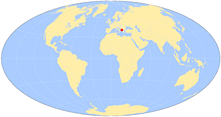
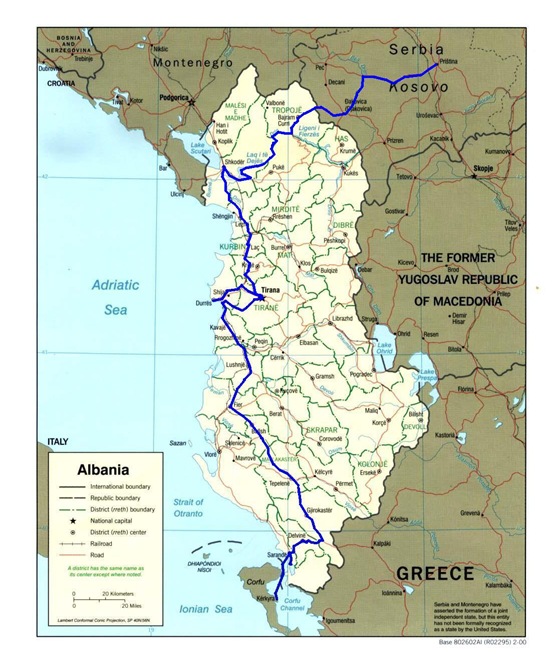

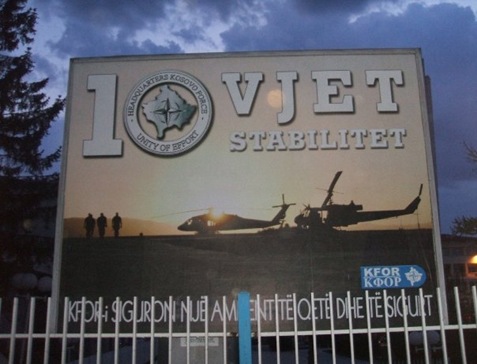
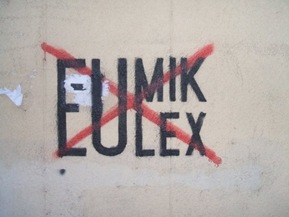
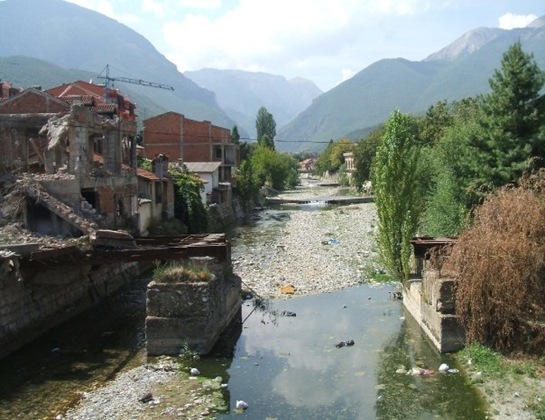
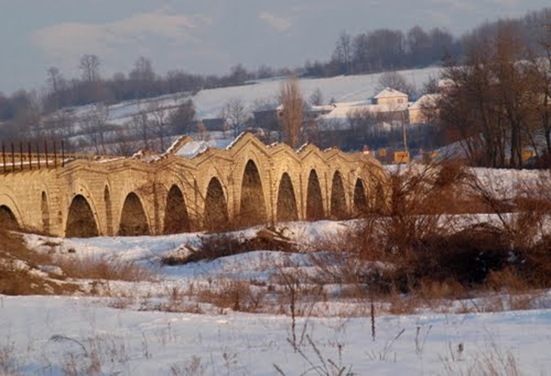
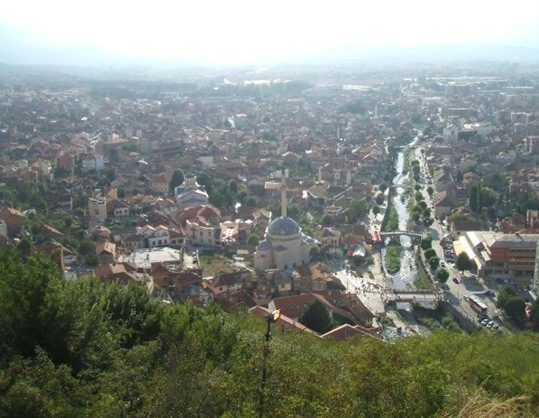
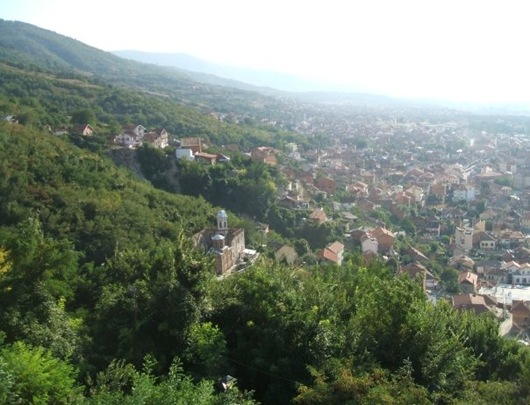
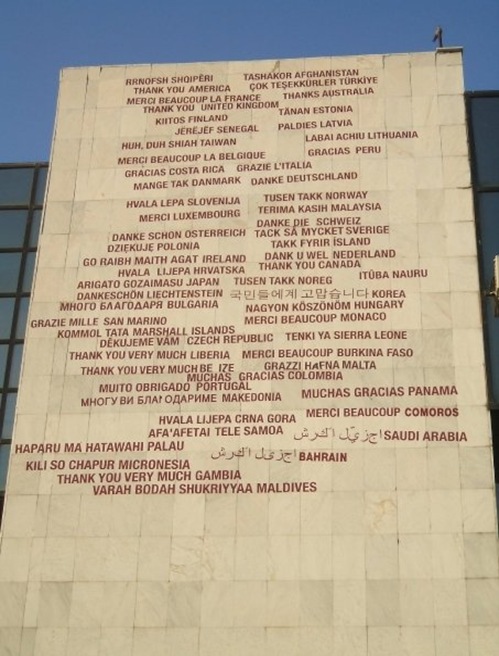
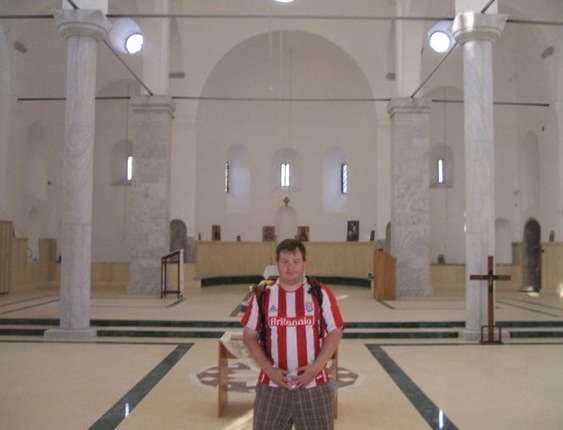
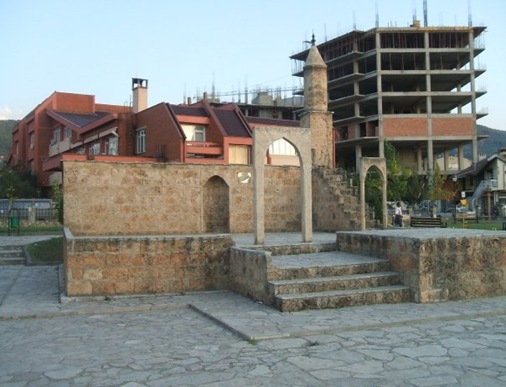

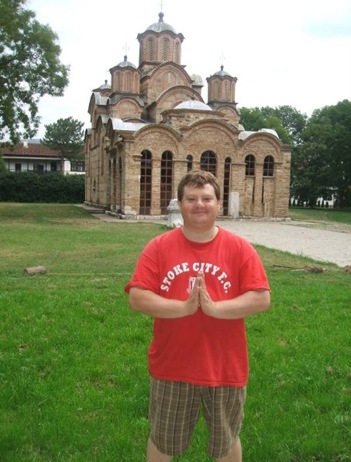
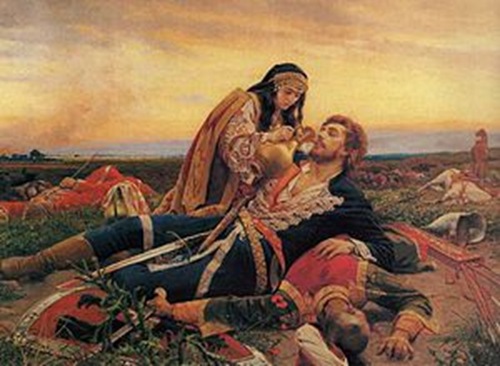
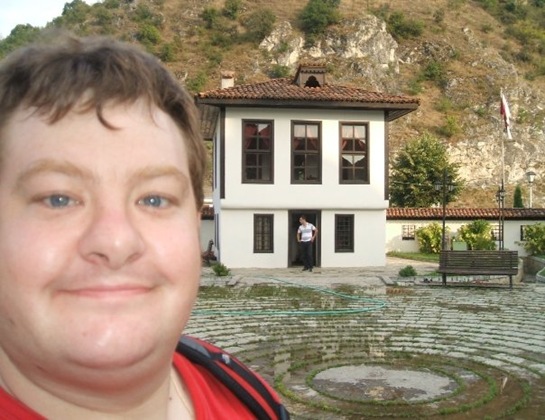
No comments:
Post a Comment